Release date: 2018-06-01
In today's article, we will send readers these top ten scientific maps and an interpretation of these images. If you don't read the interpretation, can you recognize from the picture what kind of scene it is showing?
1. Lauren Zasadil and Angelika Amon

Abnormal segregation of chromosomes during cell division is a classic hallmark of cancer. In recent years, some studies have found that immune cells can eliminate aneuploid cells in the body before the onset of cancer, eliminating the crisis. Researchers used mouse tissue models to find the mystery behind the special activity of the immune system. And every piece of tissue, let us know a little more about the mechanism behind this.
2. Abel B. Cortinas, Kevin B. Daniel, Victor Cruz, Robert Grant, and Daniel G. Anderson
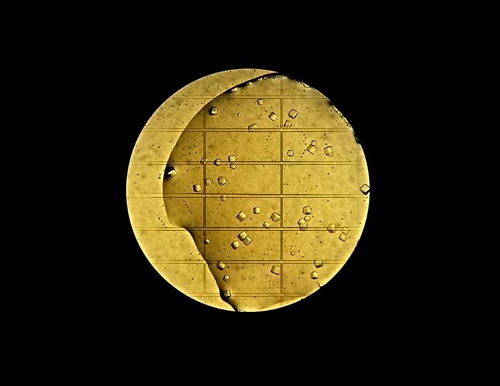
Diabetes can be controlled by injecting insulin. Such protein hormones can help the body regulate blood sugar, but the dosage of insulin needs to be continuously controlled, causing inconvenience to the patient. To solve these problems, the researchers developed a "smart insulin" that automatically releases according to the level of blood sugar. This picture shows the crystal structure of the engineered insulin.
3. Aikaterini Mantzavinou, Lina A. Colucci, and Michael J. Cima

Many patients with advanced cancer will have abdomen full of tumors, and they also need surgery and chemotherapy to kill as many cancer cells as possible. At the same time, they also hope to minimize the harm of treatment to the body. This time, the researchers found inspiration from origami. They fold the biomaterials containing the chemotherapeutic drugs and let them spread slowly in the patient. Such "origami" can be implanted into the body through minimally invasive surgery, and the drug can be slowly released in the body for a long time.
4. Leah Caplan, Jatin Roper, Inbal Avraham-Davidi, Sebastian Santos, Ömer Yilmaz, and Aviv Regev
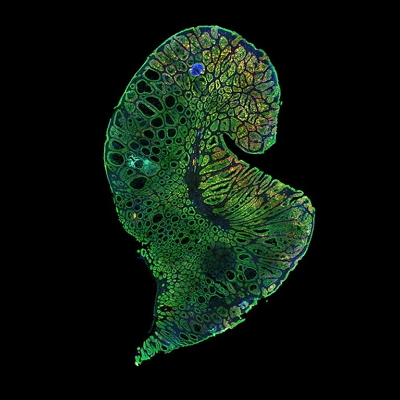
Using advanced single-cell genome sequencing technology, combined with computer imaging technology, researchers can better understand how cells work. In this picture, the researchers sequenced colon cancer cells and used fluorescent markers. Yellow is a cell with stem cell activity, and red is a cell that is rapidly proliferating. These different colors represent the diversity of the tumor.
5. Kaitlyn Sadtler, Corina MacIsaac, Robert Langer, and Daniel G. Anderson

How do you know if the experiment has been successful? A team decided to use the innovative dyeing technique to dye the five different structures of the large intestine. After treating a wound, the researchers stained the tissue and compared it to the control group. The results show that this innovative dyeing technique can well mark the recovery of the tissue, and it also proves that the team's wound treatment has been successful.
6, Jason YH Chang, Tyson Moyer, and Darrell Irvine
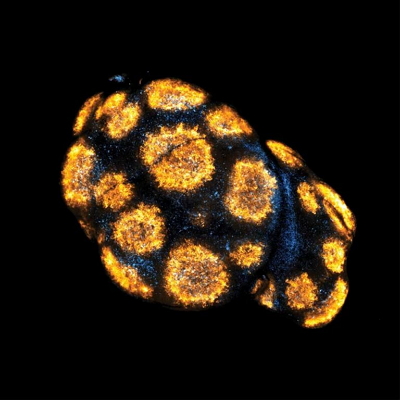
The germinal center in the lymph nodes is a small biochemical plant in immune B cells that helps the immune system respond to infectious diseases. This picture depicts a new nano-vaccine technology. Blue nanoparticles stay in the vicinity of orange dendritic cells, promoting B cell proliferation and antibody production. This has potential application value for HIV infection and even cancer treatment.
7, Rodrigo Garcia, Feng-Ju (Eddie) Weng, and Yingxi Lin
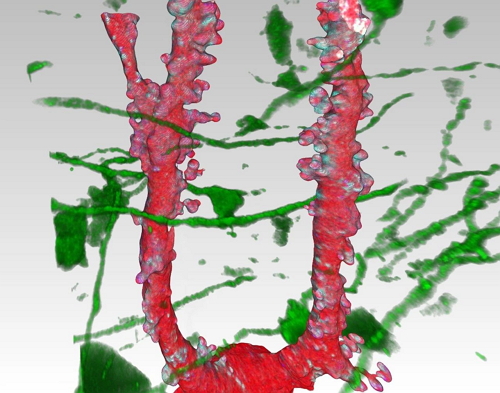
This is a study from Chinese scholars. We know that memory is stored in the hippocampus of the brain, but only one neuron connection controls the formation of new memories, and this picture tells the connection—a unique large axon (green) and Dendrites (red) form synapses, and proteins (blue) are present in the synapse. Understanding the structures that these neurons form at the cellular and molecular levels can be useful for understanding the formation of memory.
8. David Benjamin and Richard Hynes
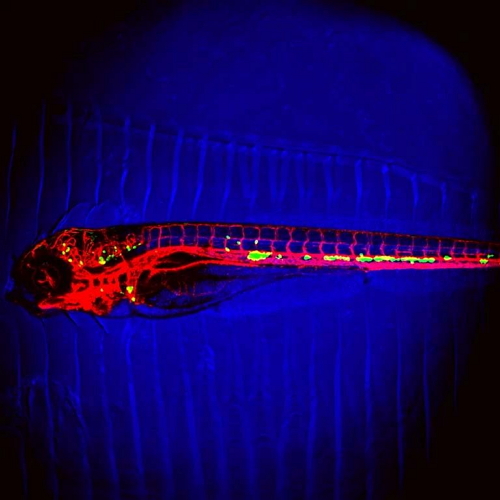
The researchers found that cancer cell metastasis is not a random event. Before metastasis, cancer cells activate specific genes to facilitate their leaving. Using transparent zebrafish embryos, the researchers found that YAP oncogenes alter the behavior of tumor cells (green) - once the YAP gene is overexpressed, these cells will penetrate blood vessels (red) and go further afield. go with. They even go into the brain and bring shifts in the brain. This finding explains how cancer can be transferred to different organs away from the source.
9, Allen Tseng and Ron Weiss
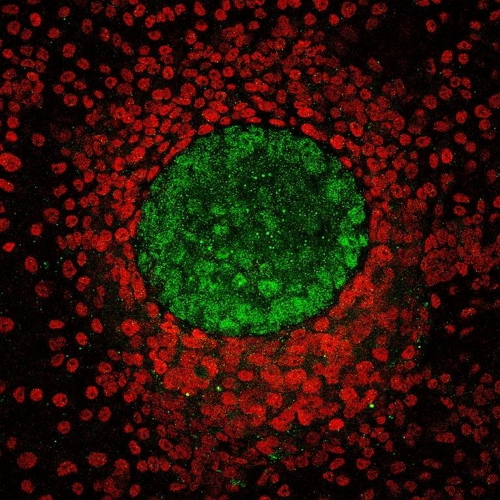
Stem cell differentiation is an important part of the biological development process. In one study, some stem cells were designed to develop into "organs," which are good simulations of actual organs and are important in scientific research. The red color we see is developed into stem cells, blood vessels, and other types of cells, while green is the cells that differentiate into neurons. Accurate labeling of these cells will help us better control the stem cell differentiation process.
10. Clare Harding and Sebastian Lourido
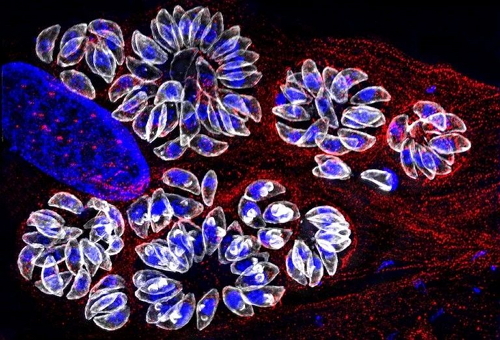
Do you know what these flower-like structures are? They are toxoplasma parasitic in a single human cell (red). On the outside of Toxoplasma gondii, a protein called GAPM1a that maintains the structure of the parasite. For this protein, we are expected to inhibit the growth and reproduction of parasites.
Some people say that biology is a subject of "seeing is believing", and even "what you see is what you believe." We are appreciating these scientific maps, and we are grateful to these scientists for using wonderful pictures to deepen our understanding of nature.
Source: Academic Jingwei
Reflective Sheeting,3M Reflective Sheeting,Best Reflective Tape,Colored Reflective Tape
Kunshan Jieyudeng Intelligent Technology Co., Ltd. , https://www.jerrytapes.com